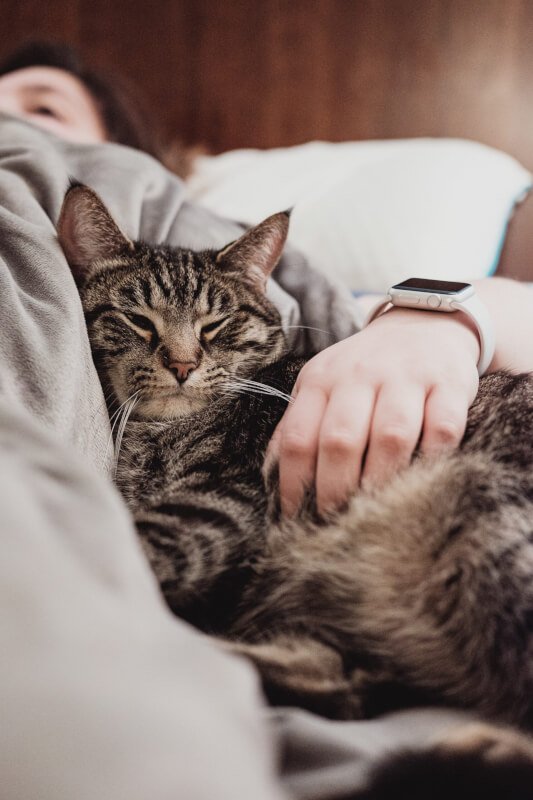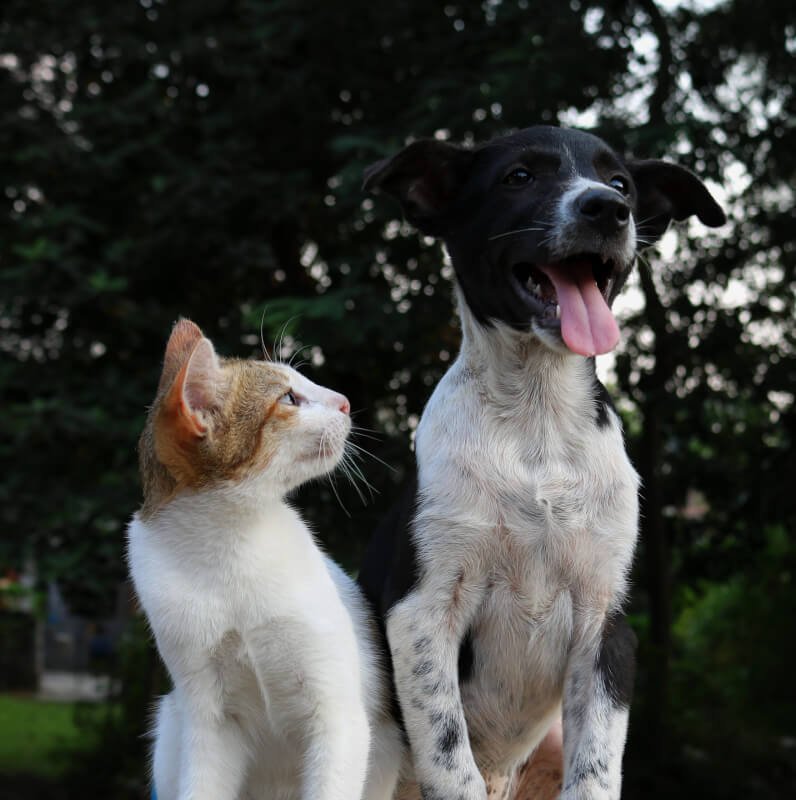Are you struggling with your furry friend’s behavior? Look no further than Pet Harmony Animal Behavior And Training! This exceptional organization is dedicated to creating harmonious relationships between pets and their owners through effective behavior modification techniques and training methods. With years of experience and a passion for animal well-being, Pet Harmony is committed to helping you unlock the full potential of your beloved pet. Whether you are dealing with behavioral issues or simply looking to enhance your pet’s obedience skills, Pet Harmony is your go-to solution. Get ready to embark on a rewarding journey towards a stronger bond with your furry companion.
Understanding Animal Behavior
Animals are fascinating creatures, each with their own unique behaviors and communication methods. Understanding animal behavior is crucial for several reasons. Firstly, it allows us to better comprehend our pets’ needs and provide them with a fulfilling environment. Additionally, understanding animal behavior can help address common behavior issues that pets may exhibit. Training plays a vital role in addressing these issues and promoting a harmonious relationship between humans and animals.
Ready for Cat Trivia?
Test your knowledge about cats!

The Importance of Understanding Animal Behavior
Understanding animal behavior is key to ensuring the well-being of our furry friends. By knowing why they exhibit certain behaviors, we can create an environment that caters to their specific needs. This includes providing them with proper nutrition, exercise, mental stimulation, and social interactions. When we understand our pets’ behavior, we can also identify signs of discomfort or distress, enabling us to promptly address any health or emotional issues they may be experiencing.

Common Animal Behavior Issues
Animals, just like humans, can experience behavior issues. Some common problems include aggression, separation anxiety, inappropriate elimination, excessive barking or meowing, and chewing or destructive behavior. These issues can disrupt the harmony in our homes and cause stress for both pets and their owners. However, with a deeper understanding of animal behavior and appropriate training techniques, these issues can often be resolved or prevented.
The Role of Training in Addressing Behavior Issues
Training is a crucial component in addressing behavior issues in animals. By teaching pets acceptable behaviors and providing them with clear boundaries, we can modify their behavior and foster a positive environment. Training helps pets understand what is expected of them and builds a foundation of trust and respect between humans and animals. It also allows us to redirect unwanted behaviors and reinforce positive ones, leading to a happier and more well-behaved pet.

Different Approaches to Animal Training
Various approaches to animal training have been developed, each with its own techniques and philosophy. Let’s explore some of the most commonly used methods:
Positive Reinforcement Training
Positive reinforcement training focuses on rewarding desired behaviors rather than punishing undesirable ones. This method involves using treats, praise, and other rewards to reinforce good behavior, encouraging pets to repeat it. Positive reinforcement training fosters a positive and trusting relationship between pets and their owners, as it emphasizes rewards and encourages learning through motivation rather than fear or intimidation.
Clicker Training
Clicker training is a specific form of positive reinforcement training that uses a clicker, a small device that makes a distinct clicking sound, to mark desired behaviors. This method allows for precise timing in rewarding behaviors, making it an effective way to communicate with pets and reinforce positive actions. Clicker training is often used in combination with treats or other rewards to create a clear association between the click and the desired behavior.
Dominance-Based Training
Dominance-based training is an older approach that focuses on establishing dominance and control over an animal. It often involves techniques such as alpha rolls, physical corrections, and dominance postures. However, this method has received criticism in recent years due to its potential for fear and aggression in animals. Many animal behavior experts now advocate for more positive and relationship-based training methods instead.
Behavior Modification Techniques
Behavior modification techniques involve identifying the cause of a specific behavior issue and implementing strategies to change it. This approach often requires the guidance of a professional animal behaviorist or trainer who can assess the root cause and create a customized plan to address the problem. Behavior modification techniques may include desensitization, counterconditioning, and gradual exposure to triggers.
Setting Up a Positive Environment for Your Pet
Creating a positive environment for your pet is essential for their overall well-being and behavior. Here are some key considerations to ensure their needs are met:
Providing Basic Needs
Pets have basic needs that must be met to thrive. This includes providing them with a balanced diet, fresh water, and regular veterinary care. Ensuring that your pet’s physical needs are met is the first step to promoting good behavior and overall health.
Creating a Safe and Stimulating Environment
A safe and stimulating environment is crucial for keeping pets mentally and physically engaged. Provide them with toys, scratching posts, and climbing structures to keep them entertained. Designate a cozy resting area where they can relax undisturbed. Ensure that your home is free from any potential hazards that could harm your pet.
Establishing a Routine
Animals thrive on routine. Establishing a consistent daily schedule for feeding, exercise, playtime, and rest can help pets feel secure and reduce anxiety. Consistency in their routine provides predictability and makes them more receptive to training and behavior modification efforts.

Exploring Canine Behavior
Understanding canine behavior is essential for dog owners looking to establish a positive and harmonious relationship with their furry companions. Let’s delve into some key aspects of canine behavior:
Canine Communication
Dogs communicate through various body language cues, vocalizations, and facial expressions. Understanding these signals can help you interpret their emotions and intentions. For example, a wagging tail does not always indicate happiness but could also signal anxiety or excitement. Learning to read your dog’s body language allows for better communication and a deeper understanding of their needs and emotions.
Understanding Aggression in Dogs
Aggression is a complex behavior in dogs that can stem from various factors, including fear, territoriality, resource guarding, or lack of socialization. Recognizing the signs of aggression is crucial for both the safety of humans and other animals. It is important to address aggression promptly and seek professional help if needed, as it can escalate if left unmanaged.
Dealing with Separation Anxiety
Separation anxiety is a common issue among dogs and occurs when they experience distress or anxiety when left alone. Symptoms may include excessive barking or howling, destructive behavior, house soiling, or attempting to escape. Gradual desensitization, using positive reinforcement techniques, and providing mental stimulation and enrichment can help alleviate separation anxiety in dogs.
Understanding Feline Behavior
Cats have their own unique set of behaviors and body language, which can sometimes be misunderstood by their human counterparts. Here are some important aspects to consider when understanding feline behavior:
Understanding Feline Body Language
Cats communicate primarily through body language, vocalizations, and scent marking. Understanding their cues can help you interpret their moods and intentions. For example, an upright tail indicates a friendly and confident cat, while a puffed tail can indicate fear or aggression. By understanding feline body language, you can better respond to their needs and ensure a positive relationship.
Addressing Common Behavior Problems in Cats
Cats may exhibit behavior problems such as aggression, inappropriate scratching, spraying, or refusing to use a litter box. These issues can often be addressed through behavior modification techniques, environmental enrichment, and providing appropriate outlets for their natural instincts. For example, providing scratching posts and interactive toys can redirect their focus and prevent destructive behaviors.
Handling Territorial Aggression
Territorial aggression is a common behavior problem in cats, particularly in multi-cat households. This aggression arises when a cat perceives an intruder in its territory. It can manifest as hissing, growling, and even physical attacks. Creating separate spaces for each cat, providing vertical territory, and gradual introductions can help reduce territorial aggression and promote a harmonious living environment.

Training Tips for Exotic Pets
Exotic pets, such as birds and reptiles, have their own unique training needs and requirements. Consider the following tips when training these extraordinary companions:
Understanding the Specific Needs of Exotic Pets
Researching and understanding the specific needs of your exotic pet is crucial before attempting to train them. Each species has unique behaviors, dietary requirements, and social needs that must be met for their well-being. Gain knowledge from reputable sources and consult with exotic pet experts to ensure you meet your pet’s needs appropriately.
Positive Reinforcement Techniques for Exotic Animals
Positive reinforcement training techniques can be effective in training exotic animals as well. By using rewards such as treats, praise, or access to preferred activities, you can motivate and reinforce desired behaviors. Patience, consistency, and utilizing the natural instincts of the animal are key factors in successful training.
Special Considerations for Training Birds and Reptiles
Birds and reptiles have different learning abilities and motivations compared to mammals. Birds, for example, are highly social creatures and can be trained to perform tricks and mimic sounds. Reptiles, on the other hand, are more solitary and have more specific environmental needs. Researching species-specific training techniques and consulting with experienced bird or reptile trainers can help you provide the best training experience for your exotic pet.
The Benefits of Animal Training
Animal training offers several benefits, not only for the pets themselves but also for their owners. Let’s explore some of these advantages:
Bonding with Your Pet
Training provides an opportunity for bonding and building trust between humans and animals. By spending quality time with your pet during training sessions, you strengthen the bond and deepen your relationship. Training creates a positive association with obedience and responsiveness, leading to a stronger connection with your furry friend.
Improving Communication and Understanding
Training enables clear communication between pets and their owners. By teaching them commands and cues, you establish a common language that allows for effective communication and understanding. This enhances the overall quality of interactions and ensures that both parties are on the same page.
Enhancing Safety and Well-being
Training plays a vital role in keeping pets safe. By teaching them basic obedience commands and impulse control, you can prevent them from engaging in dangerous behaviors or getting into potentially harmful situations. Training also stimulates their minds, providing mental exercise and enriching their lives.

Choosing a Professional Trainer
When seeking professional help for your pet’s training needs, it is important to choose a trainer who aligns with your values and uses positive training methods. Consider the following factors when selecting a professional trainer:
Qualities to Look for in a Trainer
A good trainer should possess qualities such as patience, empathy, and a deep understanding of animal behavior. Look for someone who has experience working with your specific type of pet and demonstrates a genuine love for animals. Observing their training methods and receiving referrals from other pet owners can help you make an informed decision.
Certifications and Accreditations
Trainers who have obtained certifications or accreditations from reputable organizations demonstrate a commitment to continuing education and professional standards. Look for certifications such as Certified Professional Dog Trainer (CPDT) or Certified Applied Animal Behaviorist (CAAB) to ensure that the trainer is well-versed in evidence-based training techniques.
The Importance of Positive Training Methods
Choosing a trainer who utilizes positive training methods is crucial for the well-being and happiness of your pet. Positive trainers focus on rewarding desired behaviors rather than punishing unwanted ones, creating a positive and fear-free training experience. Positive training methods are not only more effective long-term but also promote a stronger bond and mutual respect between pets and their owners.
Training for Therapy Animals
Therapy animals play a vital role in providing comfort, companionship, and support to individuals in need. If you are considering training your pet to become a therapy animal, consider the following:
Qualifications and Requirements for Therapy Animals
Therapy animals must meet specific qualifications to ensure that they are suited for their role. They must have a calm and friendly temperament, be well-trained, and capable of handling various environments and situations. Each therapy animal organization may have specific requirements and evaluation processes that must be followed.
Training Techniques for Therapy Animals
Training therapy animals involves building on basic obedience commands and socialization skills. These animals must be comfortable and tolerant of being touched, handled, and exposed to different types of people and environments. Training should focus on creating a calm and gentle demeanor, as therapy animals need to provide comfort without causing stress or anxiety.
The Impact of Therapy Animals on Human Well-being
Therapy animals have a profound impact on the well-being of individuals they interact with. They provide emotional support, alleviate anxiety and stress, and improve the overall mood and happiness of those they visit. Therapy animals offer a sense of companionship and unconditional love, making a positive impact on the lives of many.
Dealing with Behavioral Issues
Behavioral issues can arise in pets, causing frustration and stress for both the animals and their owners. Let’s explore some common behavioral issues and approaches to address them:
Aggression towards People or Other Animals
Aggression can manifest in various ways, including growling, biting, or lunging towards people or other animals. Addressing aggression should always be approached with caution, seeking the guidance of a professional animal behaviorist or trainer. Depending on the underlying cause, solutions may involve behavior modification techniques, desensitization, management strategies, or medication in severe cases.
Inappropriate Elimination
Inappropriate elimination refers to when pets eliminate their waste outside of designated areas, such as the litter box or designated potty spot. It is essential to rule out any medical conditions that may cause this behavior and address them appropriately. Training and environmental modifications, such as providing multiple litter boxes or regular outdoor access, can help resolve this issue.
Excessive Barking or Meowing
Excessive vocalization can be a nuisance for both pets and their owners. Identifying the root cause of the excessive barking or meowing is key to addressing the problem. It could be due to boredom, anxiety, fear, or the need for attention. Training techniques such as teaching a “quiet” command and providing mental and physical stimulation can help alleviate this behavior.
Chewing and Destructive Behavior
Chewing and destructive behavior can be a result of boredom, anxiety, teething, or lack of appropriate outlets for natural instincts. Providing appropriate chew toys, mental stimulation, and regular exercise can redirect these behaviors onto more acceptable alternatives. Crate training or using baby gates can also help manage destructive behavior when unsupervised.
In conclusion, understanding animal behavior is essential for creating a harmonious and fulfilling relationship with our pets. Through training and positive reinforcement, we can address behavior issues, enhance communication, and ensure the safety and well-being of our furry friends. Whether it’s dogs, cats, or even exotic pets, taking the time to understand their unique needs and providing a positive environment will lead to a lifetime of love and companionship.


